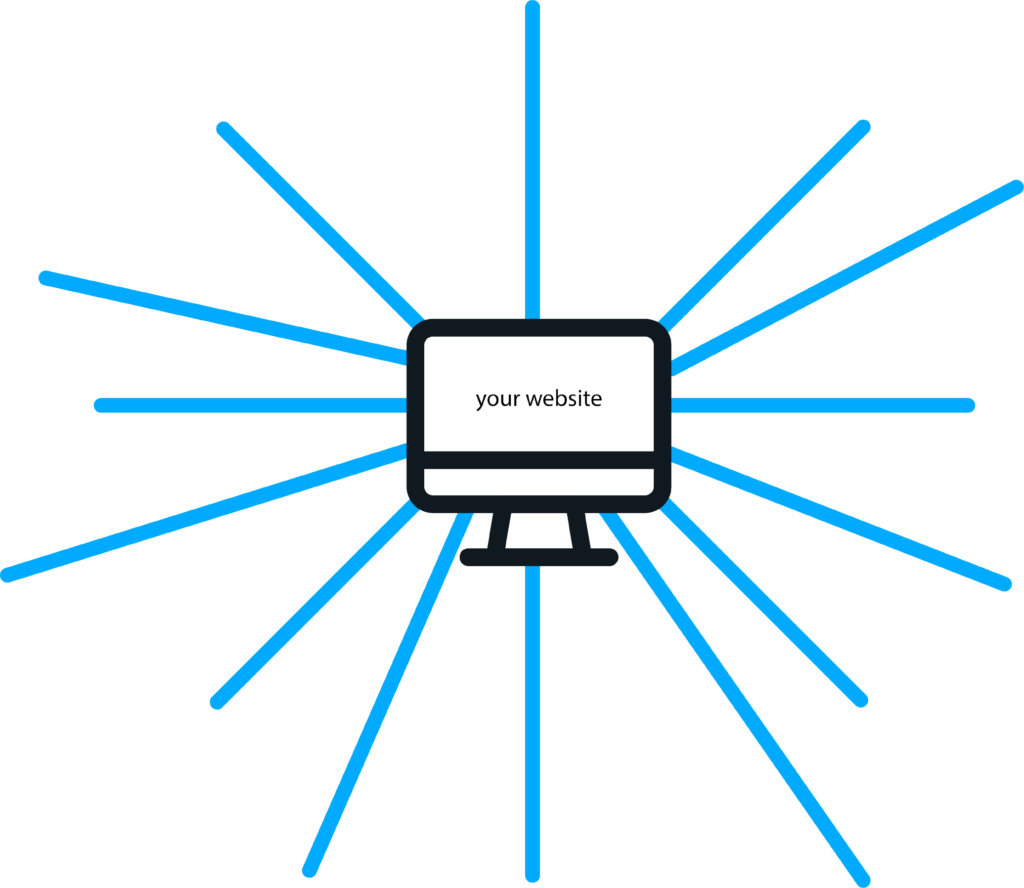What is one of the main reasons you’re thinking of starting a blog for your website? Maybe you just love the expression and freedom that comes with writing?
Or maybe it’s really because you want your website to get more attention and visibility.
Having an abundance of & high quality content on your website is one of the best ways to rank higher in Google and drive more traffic to your website.
When you combine this content with a wealth of backlinks from high domain authority websites, you website stands a great chance of ranking higher on Google.

The problem is that it is notoriously difficult to build these types of high quality backlinks.
You can reach out to other relevant webmasters and ask if they would consider linking to your content (and so your website) but you cannot guarantee that they will place that link on their site.
Unlike backlinks though, creating great content is directly under your control.
Researching, planning, creating and publishing content is something you’re able to do without having to rely on anybody else.
The issue is that there are many factors that determine the difference between a great piece of content and a mediocre piece of content.
As of 2021 there are 600 million blogs on the internet, and unfortunately they can’t all be good.

When searching for a certain topic Google wants to put the premium content at the forefront, since Google’s aim is to connect users with the best piece of content out there.
Therefore it’s unfortunate but a mediocre piece of content will most likely get buried among the others out there.
It doesn’t matter how much experience and passion you have, if you don’t convey that properly within the content on your website very few people will read it.
Obviously we don’t want mediocre, we want to write great quality content that is recognised by your audience as highly useful and relevant and ranked by Google on page #1.
So if you want your content to be high value then you need to plan and and create it with 2 people in mind:
Gone are the days when a 500 word text-blog post will do the job. Now you need to remember that you aren’t just writing for your audience, you’re also writing for Google.
By keeping both of these in mind you will end up with a useful source of information filled with great images and media and formatted in a way that adheres to a multitude of Google’s current ranking factors.
This way when Google crawls and indexes the page it can confidently determine that your content is the best match for the keywords contained in the blog post.
This is important since Google strives help its users by matching search terms with the most relevant & useful content.

Since your blog is also going to be highly useful to your audience (not just Google!) you’ll be able to build trust and create more opportunities for the readers to take further action with your business and potentially enter your business’ sales funnel.
In this article we’re going to go through some of the most important factors that make a piece of content great.
The primary reason to create a great piece of content is to help users by providing them with answers and information to the questions, problems and search terms they type into Google.
But if a user thinks they’ve clicked onto the wrong website, or they just aren’t certain your blog will give them the answers they seek, then they may well click off your webpage soon after clicking onto it (they’ll bounce).
The 2 main factors that determine if a user will stay on a webpage are:
Improving these 2 factors will help to ranking you higher and increase the time a user spends on your website and engaging with the information on there.
The thing about relevance is that your website and the blog article displayed may be highly relevant to the user searching for the information contained on your website, but if the blog isn’t perceived as being relevant then it doesn’t matter how great and interesting the information is, the user will simply click off your website.
Add a nice clear heading that introduces the topic you’re writing about and make sure the overall structure of the blog is well-formatted, that way the user can skim ahead to make sure they want to invest their time into reading further.
External links are a great way to add credibility to what you’ve written. If you’ve quoted facts or statistics then you should consider linking externally to external resources.
It lets the reader click the link to be taken to the external webpage you’ve linked to and see what the cited website says in more detail.
Not only does it confirm what you’ve written and build trust with what you’ve said, but Google looks upon these links favourably.
This is because any good piece of content that is credible will cite its sources, think of a university dissertation citing its source materials.
Be sure to limit the number of links to a sensible amount, the general rule of thumb is around 1 link every 250 words.
If you add too many links then it make make your text confusing and break the reading flow.
Google may also penalise you if you go over-board with the number of links.
It’s important you don’t go overboard with the CSS styling of your hyperlinks, Google confirmed that it doesn’t like it when websites makes its links hard to recognise as actual links.
Links should be underlined and have a separate colour used which will clearly identify them as hyperlinks.
The anchor text should also be relevant to the topic it relates to.
The use for keywords is to directly help you with your SEO ranking for Google and other search engines.
By adding these keywords to your blog Google will know that your blog topic is relevant to these topics and make it more likely that your blog will show up in the search engine results when users are searching for these terms.
The main types of keywords to research and use are:
Although you don’t want to stuff these keywords into your blog randomly, it is good practice to make a list of these keywords for each blog and aim to sprinkle them throughout the blog in a natural way.
Even if your blog article contains great information it needs to be easy to read. If it isn’t then many people will not take the time to read through and find the information they are seeking.
Computer screens emit unnatural light that our eyes are not evolved to deal with, and if you make the information contained on that screen difficult to read then it can cause eye strain which leads to an unpleasant reading experience, it may well be enough to put people off reading it all together!
When it comes to reading text on a computer screen you want to ensure that the text is broken up into short, easy to read paragraphs, this means you can quickly and easily read these small sections, one at a time.
It is also important to make sure that the paragraphs themselves are laid out in a standard manner, either a standard top down layout (like this blog) or from left to right, like a newspaper.
If your information doesn’t follow one of these classic layouts then people will quickly become frustrated and lose the flow of your communication.
There is a whole sub-reddit dedicated to people making these confusing errors, check out www.reddit/dont-dead-open-inside!